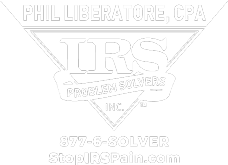
Relief from the Affordable Care Act Penalty for Not Being Insured
Article Highlights:
- Tax Reform
- Penalty for Not Being Insured
- Premium Tax Credit
- Employer Penalty
- Coverage Exemptions
- Hardship Exemptions
Thanks to the tax reform, beginning in 2019, the penalty for not having adequate health insurance, which the government refers to as the “individual shared responsibility payment,” will no longer apply.
The elimination of this penalty as of 2019 does not impact the health care subsidy for low-income families, which is known as the premium tax credit and which is available for policies acquired through a government insurance marketplace. This elimination also does not affect the penalties assessed on employers that do not offer affordable insurance to employees and that have 50 or more full-time-equivalent employees.
However, the penalty still applies for individual taxpayers who did not have minimum essential health coverage for 2018 and is the greater of the sum of the family’s flat dollar amounts or 2.5% of the amount by which the household’s income exceeds the income-tax-filing threshold.
For 2018, the flat dollar amounts are $695 per year ($57.92 per month) for each adult and half that amount ($347.50; $28.96 per month) for each child under the age of 18; the maximum family penalty using this method is $2,085 per year ($173.75 per month).
As an example, say that a family of four (2 adults and 2 children) has a household income that exceeds the income-tax-filing threshold by $100,000. This family would have a maximum penalty equal to the greater of the flat dollar amount ($695 + $695 + $347.50 + $347.50 = $2,085) or 2.5% of the income amount (2.5% × $100,000 = $2,500). Thus, the maximum penalty would be $2,500. However, the penalties are applied separately per month, and they do not apply in a given month if certain exceptions are met.
There are a number of exceptions to the penalty, as listed below. For details related to qualifying for any of these exceptions, please give this office a call. Some of the penalty exceptions apply to the entire year, and some only apply to a specific month in the year. If penalty relief applies to a specific month, it also applies to the months just preceding and following that month. The table below lists the various exceptions and the code number the government assigned to that exception.
|
COVERAGE EXCEPTIONS
|
CODE NUMBER
|
| Income below the tax-filing threshold. |
No code
|
| Coverage considered unaffordable. |
A
|
| Short coverage gap (less than 3 months). |
B
|
| Certain U.S. citizens or resident aliens living abroad. |
C
|
| Member of a health care ministry. |
D
|
| Member of an Indian tribe. |
E
|
| Incarcerated. |
F
|
| Aggregate self-only coverage unaffordable. |
G
|
| Resident of a state that did not expand Medicaid. |
G
|
| Member of tax household born or adopted during the year. |
H
|
| Member of tax household died during the year. |
H
|
| Member of certain religious sects. |
ECN*
|
| Ineligible for Medicaid based on a state decision not to expand Medicaid. |
ECN*
|
| Coverage considered unaffordable based on projected income. |
ECN*
|
| Certain Medicaid programs that are not minimum essential coverage. |
ECN*
|
| * Certain hardship exemptions. |
G – See list below
|
* ECN standards for “exception certification number,” which must be applied for and provided through the government marketplace.
In addition to the general exceptions included in the table above, hardship exemptions are also available. The most common of these exemptions are:
- Being homeless.
- Evicted or facing eviction because of foreclosure.
- Received a shut-off notice from a utility company.
- Experienced domestic violence.
- Death of a family member.
- Fire, flood or other disaster that caused substantial damage.
- Filed for bankruptcy.
- Medical expenses could not cannot be paid, resulting in substantial debt.
- Increased necessary expenses to care for an ill, disabled or aging family member.
- Claiming a child who was denied Medicaid or CHIP coverage.
- Ineligible for coverage because state didn’t expand Medicaid.
- Financial or domestic circumstances, including an unexpected natural or human-caused event, causing an unexpected increase in essential expenses, which prevented obtaining coverage under a qualified health plan.
- The expense of purchasing a qualified health plan would have caused the taxpayer to experience serious deprivation of food, shelter, clothing or other necessities.
To claim a hardship exemption, an individual must obtain an ECN through the normal application process, or for 2018, they may self-certify the hardship. However, an individual who is self-certifying is cautioned to retain documentation that demonstrates qualification for the hardship exemption, in case it is later challenged by the IRS.
A person is eligible for a hardship exemption for at least the month before, the month(s) during and the month after the specific event or circumstance that created the hardship.
This may all seem complicated; however, this office can assist you with avoiding the lack-of-health-insurance penalty. Please call with any questions you might have.

